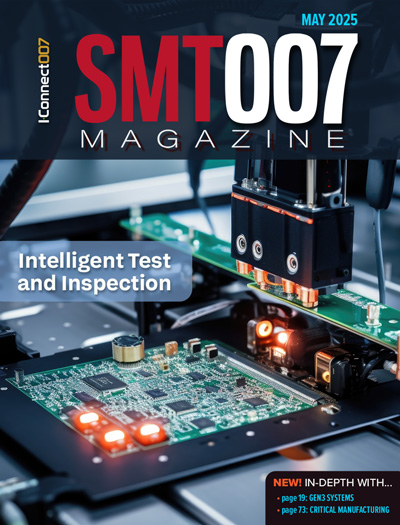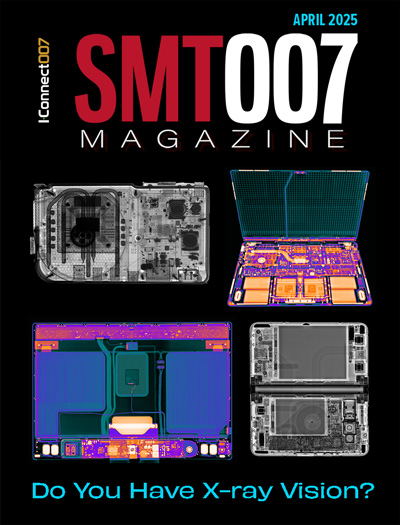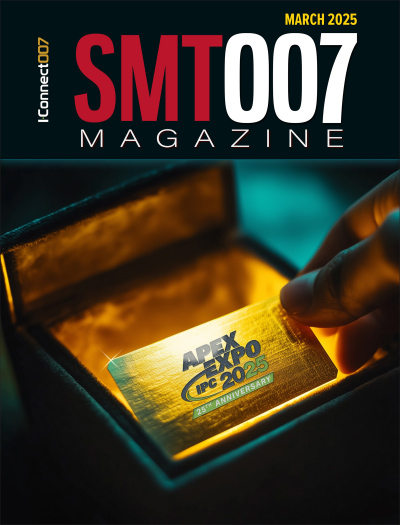-

- News
- Books
Featured Books
- smt007 Magazine
Latest Issues
Current Issue
Intelligent Test and Inspection
Are you ready to explore the cutting-edge advancements shaping the electronics manufacturing industry? The May 2025 issue of SMT007 Magazine is packed with insights, innovations, and expert perspectives that you won’t want to miss.

Do You Have X-ray Vision?
Has X-ray’s time finally come in electronics manufacturing? Join us in this issue of SMT007 Magazine, where we answer this question and others to bring more efficiency to your bottom line.

IPC APEX EXPO 2025: A Preview
It’s that time again. If you’re going to Anaheim for IPC APEX EXPO 2025, we’ll see you there. In the meantime, consider this issue of SMT007 Magazine to be your golden ticket to planning the show.
- Articles
- Columns
Search Console
- Links
- Media kit
||| MENU - smt007 Magazine
A New Kind of Quantum Bits in Two Dimensions
March 21, 2018 | TU WienEstimated reading time: 3 minutes
Two novel materials, each composed of a single atomic layer and the tip of a scanning tunneling microscope – these are the ingredients to create a novel kind of a so-called “quantum dot”. These extremely small nanostructures allow delicate control of individual electrons by fine-tuning their energy levels directly. Such devices are key for modern quantum technologies.
The theoretical simulations for the new technology were performed in the team of Prof. Florian Libisch and Prof. Joachim Burgdörfer at TU Wien. The experiment involved the group of Prof. Markus Morgenstern at RWTH Aachen and the team around Nobel-prize laureates Andre Geim and Kostya Novoselov from Manchester who prepared the samples. The results have now been published in “Nature Nanotechnology”.
Tuning electron energies
"For many applications in the field of quantum technologies one requires a quantum system were electrons occupy two states – similar to a classical switch – on or off, with the difference that quantum physics also allows for arbitrary superpositions of the on and off states“ explains Florian Libisch from the Institute for Theoretical Physics at TU Wien.
A key property of such systems is the energy difference between those two quantum states: “Efficiently manipulating the information stored in the quantum state of the electrons requires perfect control of the system parameters. An ideal system allows for continuous tuning the energy difference from zero to a large value” says Libisch.
For systems found in nature – for example atoms – this is usually difficult to realize. The energies of atomic states, and hence their differences, are fixed. Tuning energies becomes possible in synthetic nanostructures engineered towards confining electrons. Such structures are often referred to as quantum dots or “artificial atoms”.
Two ultra-thin materials: graphene and hexagonal boron nitride
The international research team of TU Wien, RWTH Aachen and the University of Manchester now succeeded in developing a new type of quantum dots which allow for much more accurately and widely tunable energy levels of confined electrons than before. This progress was made possible by combining two very special materials: graphene, a conductive single atomic layer of carbon atoms, and hexagonal boron nitride, also a single layer of material quite similar to graphene except that it is insulating.
Exactly like graphene boron nitride also forms a honeycomb lattice. “The honeycombs in graphene and hexagonal boron nitride are, however, not exactly of equal size” explains Florian Libisch. “If you carefully put a single layer of graphene on top of hexagonal boron nitride, the layers cannot perfectly match. This slight mismatch creates a superstructure over distances of several nanometers, which results in an extremely regular wave-like spatial oscillation of the graphene layer out of the perfect plane.”
As the extensive simulations at TU Wien show, exactly these oscillations in graphene on hexagonal boron nitride form the ideal scaffold to control electron energies. The potential landscape created by the regular superstructure allows for accurately placing the quantum dot, or even moving it continuously and thus smoothly changing its properties. Depending on the exact position of the tip of the scanning tunneling microscope, the energy levels of the electronic states inside the quantum dot change. “A shift by a few nanometers allows for changing the energy difference of two neighboring energy levels from minus five to plus ten millielectronvolts with high accuracy – a tuning range about fifty times larger than previously possible“, explains Florian Libisch.
Towards "Valleytronics“
As a next step, the tip of the scanning tunneling microscope could be replaced by a series of nanoelectronic gates. This would allow for exploiting the quantum dot states of graphene on hexagonal boron nitride for scalable quantum technologies such as “valleytronics”.
"This emerging new field is quickly becoming a center of attention“, comments Florian Libisch. „There are multiple potential technological applications of these atomically thin materials – that is also why the TU Wien has also very recently established a special doctoral college focused on two-dimensional materials.“
Suggested Items
Dymax to Showcase Light-Cure Solutions at The European Battery Show 2025
05/23/2025 | Dymax CorporationDymax, a global manufacturer of rapid light-curing materials and equipment, will exhibit at The European Battery Show 2025 in Stand 4-C60
Pioneering Energy-Efficient AI with Innovative Ferroelectric Technology
05/22/2025 | FraunhoferAs artificial intelligence (AI) becomes increasingly integrated into sectors such as healthcare, autonomous vehicles and smart cities, traditional computing architectures face significant limitations in processing speed and energy efficiency
Self-Healing Materials Could Unlock the Potential of Tomorrow’s Technology, Reports IDTechEx
05/22/2025 | IDTechExA sci-fi movie trope is the virtually indestructible robot, capable of operating without rest due to extended battery life, able to interact with its surroundings like a human thanks to advanced soft robotic components, and fully autonomous due to an extensive suite of sensors.
STMicroelectronics Announces Expanded "Lab-in-Fab" Collaboration in Singapore to Advance Piezoelectric MEMS Technology
05/22/2025 | STMicroelectronicsSTMicroelectronics, a global semiconductor leader serving customers across the spectrum of electronics applications, in collaboration with the A*STAR Institute of Microelectronics (A*STAR IME) and ULVAC, announces the expansion of the “Lab-in-Fab” (LiF) in Singapore.
Electroninks Acquires Complete UTDots Advanced Materials Nanoinks Portfolio and IP
05/19/2025 | ElectroninksElectroninks, the leader in metal organic decomposition (MOD) inks for additive manufacturing and advanced semiconductor packaging, announced it has officially completed its full acquisition of UTDots products and IP into its portfolio, further expanding its offerings in digital printing for high-performance applications.


